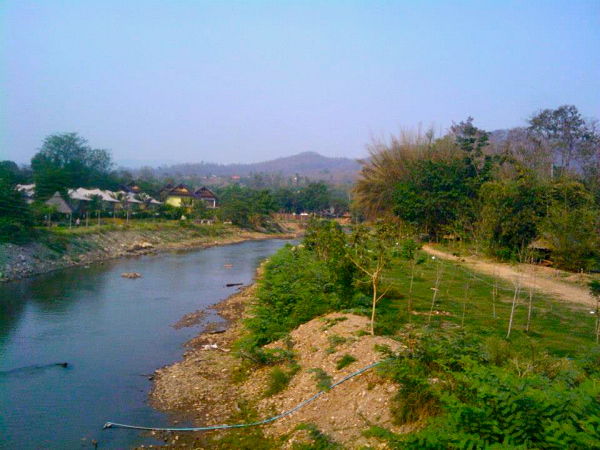Southeast Asia is world-renowned for everything exotic: From its curry-based cuisine flaring hot with spices to unusual spiky and olfactory-offensive fruits like “durian,” the region has a fair share of them all. Throw in a sprinkling of festivals that defy even a semblance of normalcy, and you have one destination bound to satisfy yearnings for everything weird or downright bizarre.
In our previous posts, we have featured some other (mainstream) festivals that border on squeamish to plain insanity, like the face-piercing Vegetarian Festival of Phuket to the mind-numbing Thaipusam of Malaysia to the really hilarious Parada ng Lechon of the Philippines. And if you think those festivals are next to normal, then get ready to suspend your unbelief for the moment for some more festivals that are better labeled as borderline.
Naga Fireball Festival, Thailand
Opinion is divided as to whether Naga fireballs are indeed natural phenomenon unexplained or simply pranks, especially that Naga fireballs have not exactly earned mainstream tourist traffic comparable to Songkran. But if you want to see for yourself, clear your calendar on October 18-19, 2013, and head to the Isaan region near the Lao border where the mighty Mekong River forms a border between the two countries.
Omed-Omedan Festival, Indonesia
You must have already heard about Thailand’s Songkran festival, the biggest of its kind not only in this part of the planet but around the world. This festival in Denpasar, the capital city of Bali, is part-Songkran (on a smaller scale) and part-Smoochfest. The Balinese call it the “Omed-omedan Festival” with the goal to make its youth more cohesive. It took place last March 13, 2013, the day after Nyepi, or the Balinese (Silent) New Year.
Nothing bonds people stronger than “kissing in the rain.”
Here’s Omed-omedan in action.
Lembah Baliem Festival, Indonesia
Ritualized aggression or mock fighting has long since replaced actual battles and that in itself is a huge leap anthropologically. At least, humans have found bloodless ways to express pent up emotions be it towards their neighbor or their society in general. Such displays of raw bravery may no longer be relevant in a society where the alpha male is brainy and no longer brawny, but it does serve the purpose of a socially-sanctioned outlet for whatever aggravation the “warring” parties may feel. West Papua (Western New Guinea), in a remote swath in Eastern Indonesia where non-essential travel requires special permit, still has warring indigenous tribes up until 20 years ago when the government intervened and introduced a more peaceful means for them to engage in “combat” without unnecessary loss in life and without inciting long-lasting vengeance. The result is the Lembah Baliem Festival complete with authentic accoutrements (spears, bows and arrows) with warriors in traditional loin cloths. The mock fighting and traditional games and cook-offs take place around mid-August, with the date revealed only days before the actual event.
This video offers a glimpse back in time minus the gore, blood and decapitation that usually accompany such battles.
Varuna Yajna, India
Rainmakers have long been highly regarded in ancient, particularly agricultural, societies for the simple reason that sometimes, the heavens get snooty and plainly refuse to let go its store of condensed water vapor. When this happens in Southern India, Hindu priests say prayers not just five times a day as Muslims would, but chant “vajna” up to 50,000 times a day! And no, the priests don’t do it with a religious song-and-dance but rather beseech Varun, the Hindu god of rains, for much needed moisture from the confines of rain barrels. (The Varuna Yajna is more of a ritual, and performed whenever the threat of drought looms.)
Kanamara Matsuri, Japan
Ultra-efficient and highly electronic are what people the world over know about the Japanese. Unbeknownst to many, the Japanese, despite their obsession with perfection and their inclination to commit “hara-kiri” if things go haywire, occasionally indulge in social “disorder” that is out of character. For who would think that beyond the spotless, ultra-modern toilets of Japan, there exists a festival built around – of all things – gigantic pink phalluses complete with all the anatomical nuances of the real thing? Known to Nihongo speakers as Kanamara Matsuri, the Festival of the Steel Phallus is serious business on the first Sunday of April in Kawasaki, a strip of land south of Tokyo and north of Yokohama. Quite fittingly, Japan needs more than ever to implore the goddesses of fertility: The country’s birth rate is desperately low and if they don’t do something about, they will face a demographic crisis. Of course, they need more than pink phallic symbols to accomplish that.
These photos may be politically incorrect but they leave very little to the imagination so those who want to see the festival may decide whether a parental guidance restriction is required or not.
The “steel phallus” in action.





